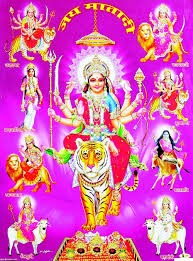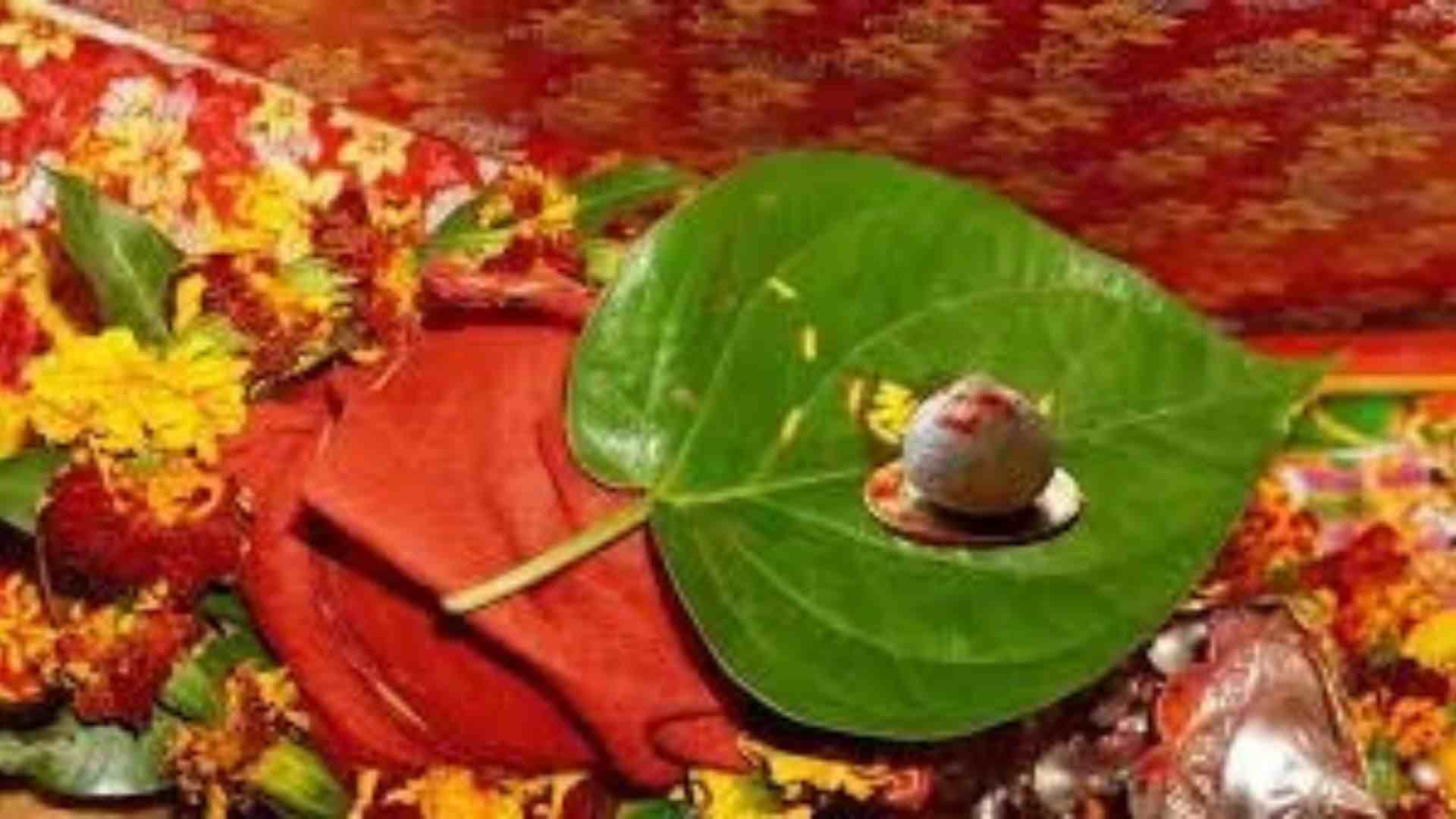Navaratri is a festival where the use of Navratri Puja materials offers physical, mental, and spiritual benefits. Its significance is further amplified by the scientific reasoning behind it. To understand the scientific importance of Navratri, it’s essential to first grasp the festival’s essence. The sages established the tradition of celebrating Navratri twice a year—once from the first day of Vikram Samvat, i.e., Pratipada (the first day) of Chaitra month during the Shukla Paksha, for nine days leading up to Navami. Similarly, exactly six months later, Navratri is observed from the Pratipada of the Ashwin month’s Shukla Paksha until Mahanavami, the day before Vijayadashami. Of these, Sharadiya Navratri holds greater significance in terms of spiritual practices and accomplishments. During these Navratri periods, people observe various forms of fasting, discipline, rituals, Yagyas (fire offerings), hymns, worship, and yoga practices to enhance their spiritual and mental strength.

Scientific basis
The scientific basis behind Navratri is that there are four junctions in a year during the earth’s revolution around the sun, out of which the two main Navratris of the year fall in the circular junctions of March and September. At this time, there is the highest possibility of germ attack. Physical diseases often increase during seasonal junctions. Therefore, the process done at that time to stay healthy and to keep the body pure and to keep the body and mind clean and completely healthy is called ‘Navaratri’. “Physical Rejuvenation through Fasting:
Astronomical and Seasonal Changes: Navratri is associated with important astronomical events: the equinoxes and solstices, which are important in marking the change of seasons. Each of the four Navratris is associated with a particular seasonal change, such as the onset of summer or winter.
Detoxification and Immunity Boosting: Seasonal changes, especially during Sharada Navratri, are often associated with a decrease in immunity and an increase in infections. Fasting and consuming a sattvic diet during Navratri acts as a detoxification, relaxing the digestive system and increasing the body’s ability to fight illnesses.
Mental Rejuvenation and Psychological Benefits:
Combating Negative Emotions: Navratri is also a time for mental detoxification by focusing on eliminating negative emotions such as anger, lust, greed and jealousy.
Psychological Effects of Fasting: Fasting is not just physical activity, but also mental activity. It helps strengthen willpower, improve focus and provide a space for introspection and self-discovery. Helps to provide a platform.

Spiritual Rejuvenation:
Connecting with cosmic energy: The nights of Navratri are considered powerful for spiritual practice. Devotees engage in meditation, prayers, and various rituals to connect with the divine feminine energy. Balance between material and spiritual aspects: The practice of worshipping various forms of Goddess Durga symbolizes the victory of positive spiritual energy over negative worldly aspects.”
“The Panchabhuta or five elements are worshipped
Water element in Kalash, Fire element in Havan Kund, in the form of Jyoti, Air element by chanting mantras, Earth element in the form of Mandals, all these worships are done in the vicinity of Sky element.”
Kalash Sthapana Vidhi and Materials Navratri Puja Samagri
Kalash, Mother’s idol, Gangajal, Mauli, Roli, Earthen pot, Pure soil, a clean cloth to place on the soil, Kalawa, wheat or barley, Akshat, coin, Mango leaf, Brass or earthen lamp, Ghee, Earthen pot, Sindoor, Red cloth, Coconut with husk, a clean cloth to place on the soil, Clean water, Havan Kund, Mango wood, Black Buy sesame seeds, incense, Panchameva, frankincense, pair of cloves, guggal, kamalgatta, betel nut, camphor, bhog for offering in havan, pure water, materials for Maa’s makeup, red chunari, bangles, toe rings, anklets, garland, bindi, mehndi, kajal, sindoor, nail polish, lipstick, mahavar or alta, earrings, nose ring and perfume for Maa.
To install the Kalash, you should have a pot made of clay or copper. The clay is placed in a vessel below it and the Kalash is placed on top of it. Along with this, you should have mango leaves, barley, vermillion, water, barley, coin, red chunari, Kalawa, clay before installing the Kalash. While installing the Kalash, first of all you should keep clay in a plate or any vessel like a plate and put barley in it. You should keep a pot filled with water in the middle of this vessel. You should put rice, betel nut, cardamom and coin in the Kalash.
After this, mango leaves should be placed on the mouth of the Kalash and after that, coconut should be wrapped in a chunari and placed on the mouth of the Kalash. Then tie a Kalawa on the Kalash and make a sign of Swastika. In this way your Kalash is established. It is believed that all the gods and goddesses reside in the Kalash. In such a situation, if you establish the Kalash on the first day of Navratri, then all the gods and goddesses become witnesses of your worship. Therefore, Kalash Sthapana has great importance in the worship of Navratri.
The material which is usually special and necessary in every worship is – fruits, flowers, lamp, incense, camphor, Kalash, coconut, vermilion, kumkum, sandalwood, rice, all these materials have special importance in worship. While incense sticks and agarbatti make the atmosphere fragrant, its smell also works to concentrate the mind. Burning of incense sticks or agarbatti is also a symbol of attaining fragrance i.e. virtues by burning one’s own shortcomings and evils. Kumkum-Chandan On one hand, kumkum and sandalwood are used to not only apply tilak to gods and goddesses, but the devotee also feels cool and calm with this sandalwood tilak. Sandalwood has the properties of providing natural fragrance and coolness which are revealed only after rubbing. The devotee also shines and transforms only after surrender.
Flower- The softer the flower, the more fragrant it is. The more beautiful it is, the more sacred it is. That is why not only is it used to adorn God, but it is also offered around his neck and feet. The flower does not stop blooming and smelling even when it is attached to the branch. The devotee also wishes to bloom and smell in every situation when he is attached to the illusion.
Lamp- Lamp is not only a symbol of light but also of knowledge. Just as the light of a lamp removes darkness, similarly the darkness of ignorance is also removed by the light of knowledge. Not only this, the flame of the lamp always rises upwards which always inspires to strive and move forward. The devotee lights a lamp in front of God and arouses the hope of light in his life. Not only this, the relation between the wick and the oil also points towards the relation between the soul and the God.
Sweets- Sweets may be in any form, be it Laddu-Barfi or Bundi-Batas, we always express our love and thanks to the one whom we call love or towards whom we are grateful by feeding him sweets. The presence of sweets in the worship reflects this feeling. Also, the devotee wishes that similar sweetness should emerge in his life in his deeds and actions, words and speech.
Kalash- Due to the special shape of the Kalash, a special and subtle sound is produced in its empty space. Due to the vibration of this subtle sound, the Shiva element of the universe is attracted towards the Kalash, due to which the devotee gets the benefit of Shiva element. Also, it is also believed that all the gods reside in its water and waves. Just like the nature of water is clean, soft, flexible and cool, a devotee desires the same qualities in his life so that he can adapt himself to every situation with softness.
Coconut- Coconut is as hard and black from outside as it is soft and white from inside. Keeping and breaking coconut in worship is a sign of giving up one’s ego. Coconut hair or shell, kernel or water, all are used, which also has many medicinal properties hidden in it.
Water- Water has special importance in worship. In worship, there is a practice of mixing water from seven rivers, namely Ganga, Godavari, Yamuna, Sindhu, Saraswati, Kaveri and Narmada and anointing the idols of gods with a urn, the purpose of which is not only to bathe the idols but also to get the blessings of those gods and yogis who had also performed penance on the banks of these holy rivers.
Betel nut and Betel leaf- Betel nut also has a special place in worship material. By putting betel nut in water, water becomes Satva-Rajoguni due to the waves generated by the betel nut. This increases the ability of water to absorb the Sagun element of the deity. Betel vine is also called Nagbel. Nagbel- is considered to be the link connecting Bhulok and Brahmalok. It has the ability to attract Bhumi waves and Brahma waves. Nagbel is extremely Satvik. The positive energy generated from the idol of the deity is absorbed by the stalk of the betel leaf.
Tulsi- Tulsi has great importance in the worship plate. Everyone knows the importance of Tulsi in spirituality and Ayurveda. Tulsi has more capacity to purify the environment as compared to other plants. By pouring water kept in a Kalash into Tulsi, Tulsi absorbs the element of the deity along with water. Tulsi sends the Chaitanya of the deity into the environment along with its Satvikta.
Haldi-Kumkum- Turmeric grows under the earth, therefore the amount of earth waves in turmeric is much higher than the things growing on the earth. Kumkum is made from turmeric only. By offering turmeric-kumkum to the deity, the devotee gets the benefit of earth waves present in turmeric-kumkum along with positive energy, which increases the Satvikta of the devotee.







